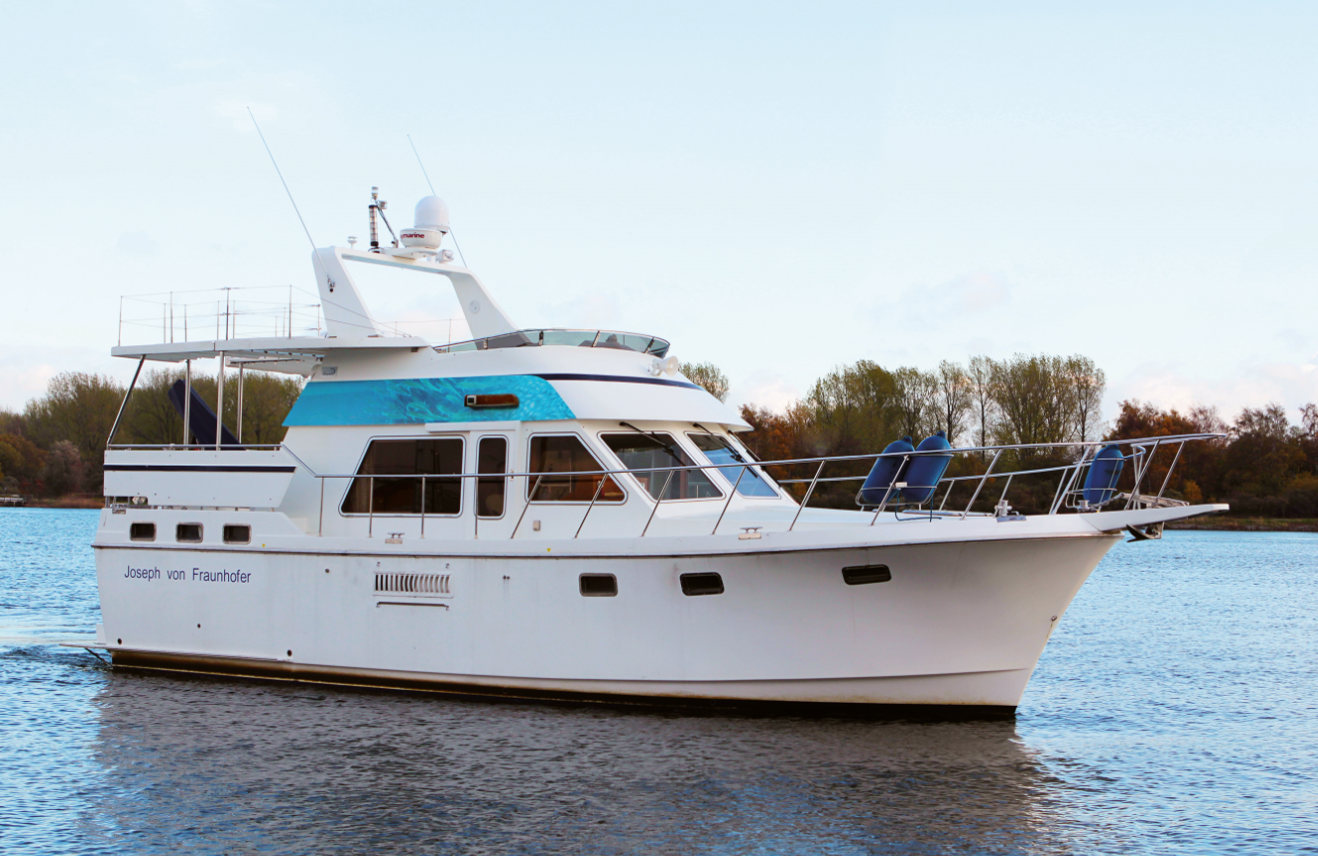Adhesives and sealants for applications on land and under water
Fraunhofer IFAM is conducting research in Helgoland on the development and use of new materials for the transport and storage of green hydrogen and its carrier medium. The German Federal Ministry of Education and Research (BMBF) is also funding another Fraunhofer IFAM project on the topic of “Increasing the strength and durability of steel bonds in the offshore sector”.
Technologies for hydrogen transportation
The TransHyDE lead project advances technologies for the transport of hydrogen. The model plans hydrogen transport from an offshore wind turbine generator OWTG to the customer on the mainland, using an organic carrier material (LOHC) is used for the transport between the island of Helgoland and the port of Hamburg. In addition to the companies participating and the municipality of Helgoland, Fraunhofer IFAM is involved as a research partner working on various tasks, such as investigations to enable more environmentally-friendly corrosion and fouling protection of using new types of coatings. Barrier coatings aim to reduce hydrogen diffusion. A test system regarding hydrogen embrittlement will be established. Adhesives and sealants could be selected based on their resistance to the LOHC medium, hydrogen and pressure. To test their resistance they are aged in the medium, followed by adhesion tests. The scientists also develop bonding concepts for reliable implementation in the field. This will provide a basic building block for bonding and sealing tanks and peripherals to ensure safe processes. The condition of the tanks and the LOHC will be monitored automatically. A demonstrator has been built for a new LOHC tank concept that reduces space requirements by 40 percent — essential for sites such as Helgoland.
Adhesive bonding under water
On maritime structures, adhesive is also used for retrofits and for repairs on secondary elements. Researchers developed a new method for injecting adhesive in different stress zones (splash, tidal and immersed zone) and considered holder systems of different diameters for this purpose. A holder is designed with an inlet and an outlet hole for the adhesive. After adhesive injection, the cavity between the holder and surface joining partners is filled as soon as adhesive flows out of the outlet. Fast thermal curing then quickly achieves handling strength.
 Fraunhofer Institute for Manufacturing Technology and Advanced Materials IFAM
Fraunhofer Institute for Manufacturing Technology and Advanced Materials IFAM
